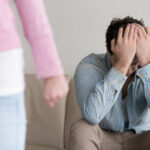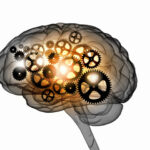What is a specific phobia?
A specific phobia, formerly called a simple phobia, is a lasting and unreasonable fear caused by the presence or thought of a specific object or situation that usually poses little or no actual danger. Exposure to the object or situation brings about an immediate reaction, causing the person to endure intense anxiety (nervousness) or to avoid the object or situation entirely. The distress associated with the phobia and/or the need to avoid the object or situation can significantly interfere with the person’s ability to function. Adults with a specific phobia recognize that the fear is excessive or unreasonable, yet are unable to overcome it. There are different types of specific phobias, based on the object or situation feared, including:
- Animal phobias: Examples include the fear of dogs, snakes, insects, or mice. Animal phobias are the most common specific phobias.
- Situational phobias: These involve a fear of specific situations, such as flying, riding in a car or on public transportation, driving, going over bridges or in tunnels, or of being in a closed-in place, like an elevator.
- Natural environment phobias: Examples include the fear of storms, heights, or water.
- Blood-injection-injury phobias: These involve a fear of being injured, of seeing blood or of invasive medical procedures, such as blood tests or injections
- Other phobias: These include a fear of falling down, a fear of loud sounds, and a fear of costumed characters, such as clowns.
A person can have more than one specific phobia. The fear may not make any sense, but they feel powerless to stop it. People who experience these seemingly excessive and unreasonable fears in the presence of or in anticipation of a specific object, place, or situation have a specific phobia. Having phobias can disrupt daily routines, limit work efficiency, reduce self-esteem, and place a strain on relationships because people will do whatever they can to avoid the uncomfortable and often-terrifying feelings of phobic anxiety. Although people with phobias realize that their fear is irrational, even thinking about it can often cause extreme anxiety.
What Are the Symptoms of Specific Phobias?
Symptoms of specific phobias may include:
- Excessive or irrational fear of a specific object or situation
- Avoiding the object or situation, or enduring it with great distress
- Physical symptoms of anxiety or a panic attack, such as a pounding heart, nausea or diarrhea, sweating, trembling or shaking, numbness or tingling, problems with breathing (shortness of breath), feeling dizzy or lightheaded, feeling like you are choking
- Anticipatory anxiety, which involves becoming nervous ahead of time about being in certain situations or coming into contact with the object of your phobia (For example, a person with a fear of dogs may become anxious about going for a walk because he or she may see a dog along the way)
- Children with a specific phobia may express their anxiety by crying, clinging to a parent, or throwing a tantrum
How Common Are Specific Phobias?
The National Institute of Mental Health estimates that about 5%-12% of Americans have phobias. Specific phobias affect an estimated 6.3 million adult Americans. Phobias usually first appear in adolescence and adulthood, but can occur in people of all ages. They are slightly more common in women than in men. Specific phobias in children are common and usually disappear over time. Specific phobias in adults generally start suddenly and are more lasting than childhood phobias. Only about 20% of specific phobias in adults go away on their own (without treatment).
What Causes Specific Phobias?
The exact cause of specific phobias is not known, but most appear to be associated with a traumatic experience or a learned reaction. For example, a person who has a frightening or threatening experience with an animal, such as an attack or being bitten, can develop a specific phobia. Witnessing a traumatic event in which others experience harm or extreme fear can also cause a specific phobia, as can receiving information or repeated warnings about potentially dangerous situations or animals. Fear can be learned from others, as well. A child whose parents react with fear and anxiety to certain objects or situations is likely to also respond to those objects with fear.
How Are Specific Phobias Diagnosed?
If symptoms of a specific phobia are present, the doctor will begin an evaluation by performing a complete medical history and physical exam. Although there are no laboratory tests to specifically diagnose specific phobias, the doctor may use various tests to make sure that a physical illness isn’t the cause of the symptoms.
If no physical illness is found, you may be referred to a psychiatrist or psychologist, mental health professionals who are specially trained to diagnose and treat mental illnesses. Psychiatrists and psychologists use specially designed interview and assessment tools to evaluate a person for a specific phobia.
The doctor bases his or her diagnosis of specific phobias on reported symptoms, including any problems with functioning caused by the symptoms. A specific phobia is diagnosed if the person’s fear and anxiety are particularly distressing or if they interfere with his or her daily routine, including school, work, social activities, and relationships.
How Are Specific Phobias Treated?
Treatment for specific phobias may include one or a combination of:
- Cognitive-behavior therapy: Treatment for specific phobias involves a type of cognitive-behavior therapy, either desensitization or exposure, in which patients are gradually exposed to what frightens them until their fear begins to fade.
- Medication: Tranquilizers (benzodiazepines) such as Ativan, Librium, Valium, and Xanax may be prescribed to help reduce anxiety.
- Relaxation techniques, such as deep breathing, may also help reduce anxiety symptoms.




